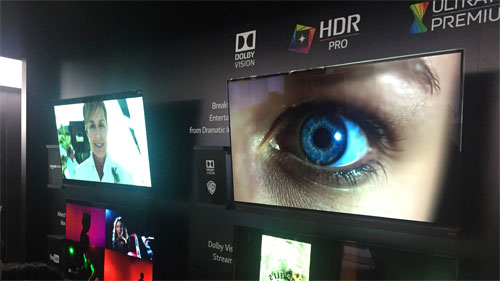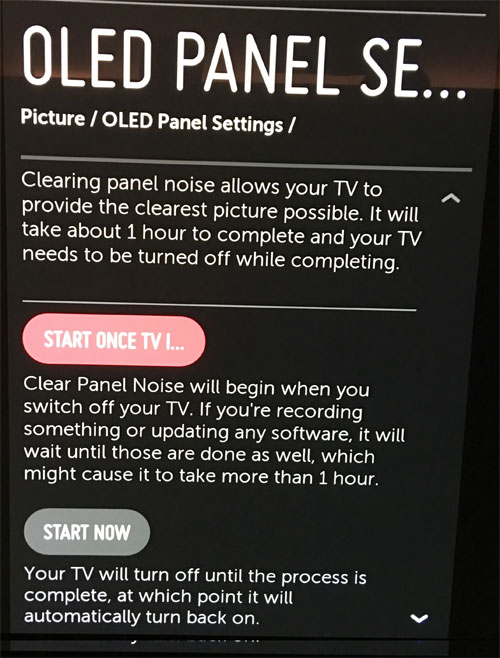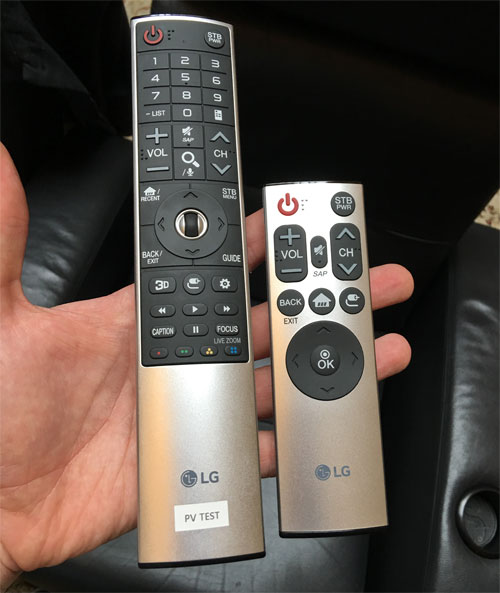After fleeing Las Vegas, videophiles the world over have had more to look forward to besides bad hangovers, thanks to LG’s continuing investment in OLED television technology. We’ve already had the chance to become reacquainted with the display that stole the show, the top-end “Signature” G6 OLED TV.

The opportunity came to us via our friends at Value Electronics in Scarsdale, New York. The high-end AV retailer is one of a handful picked by LG to display its new flagship TV product ahead of more widespread rollout. The South Korean brand is still the only manufacturer to seriously commit to OLED, meaning that the company carries the burden of trailblazing this technology (in television sizes, at least) as well as winning the hearts and minds of general consumers. Of course, every other TV maker is pushing ahead solely with LED LCD, sometimes under interesting pseudonyms (not counting, of course, Panasonic’s European OLED TV, which is looking like a no-show for the North American market).
It didn’t take long for us to head North and scrutinize the panel’s performance, and after spending a day with the early OLED65G6, we can confidently state that 2016 is going to be a big year for this display technology. Recently, we’ve noticed that LG’s OLED TVs have been improving at a steady rate, and are now delivering the levels of picture quality that compliment OLED’s inherent contrast abilities (we found several uniformity and color accuracy issues with the earlier efforts, to the extent that we didn’t feel they were suitable replacements for the very best final plasma displays). The 2016 OLED model appears to be another marked improvement.
The first thing we noticed after delving into the LG 65G6’s menus was that they’ve been redesigned, and are now in a dark shade (we have no idea if that will apply across the board or if it’s reserved for the premium models). They also respond faster to user input, and have some usability enhancements that make navigation the various picture setup controls considerably faster. The previous white-and-pink menus were slower, and perhaps because of their brightness, interfered with calibration.
There are new picture quality-related options, too. The most interesting one relates to screen uniformity, and is called “Clear Panel Noise”. The “noise” actually refers to uniformity errors (we’ve found from experience that Asian sources typically use the term “noise” to describe what we’d call “artifacts” in the West, contrary to our Western usage of the term). Dark scene uniformity was previously one of the biggest issues with LG’s OLED televisions, so it’s great to see the company getting a handle on it in such a way.

If you’ve read our review of the Panasonic CZ950/CZ952 OLED, you’ll remember that we combed through LG Display’s OLED patents to learn more about the performance of these still-mysterious screens, and learned that for all their other strengths, producing uniform luminance across a high-res OLED panel is no easy feat: the panels must employ a voltage offsetting process in order to produce a uniform image. On the LG G6, users can choose to run a panel measurement process, which takes over an hour (and is therefore best run overnight while the user is asleep – and indeed, the menu allows for this convenience) and measures the current flowing through pixels at various locations across the panel surface. This uniformity correction process isn’t entirely new – LG’s previous OLEDs run it in standby after accumulated usage of more than three hours, but the 2016 models mark the first time that LG has acknowledged its presence by putting it in the user menu, and as far as we understand, it’s also the first time the panel has been allowed this length of time to better correct uniformity issues.
We’re very glad that LG has made this process more accessible, and this, coupled with the improving yields and manufacturing processes, surely accounts for why the uniformity has improved to the extent that it has. We were happy indeed with the uniformity we saw in the Value Electronics showroom. Displaying 1%, 2% and 3% above black patterns revealed only a few latent columns of differing brightness, and the performance improved still after letting the display calculate its uniformity offsets as part of the aforementioned process. Of course, it’s not perfect, but similarly to Panasonic’s OLED implementation, we feel that it’s now at the level where it’s no longer a deal-breaker, given the other strengths of this display technology.
After some picture adjustment, we looked at both test signals and a mix of content on the LG OLED65G6. First up, our old faithful Blu-ray Disc of Gladiator (remastered version). The image quality was utterly stunning, and got us enthused about flat panel technology in a way that we’ve rarely been since the end of the last self-emitting display technology. There was no unwanted detail reduction, no digital manipulation, and no color accuracy problems that we could see: just glossy, accurate, vivid, naturally-colored images. We also went over to the other end of the realism spectrum and had the LG Signature G6 display Spirited Away, the 2D animation of which is a great test for screen uniformity. Beyond some very minor blemishes, which we felt were dwarfed by the television’s other strengths, we were ecstatic at the picture performance. Input lag measured using a Leo Bodnar tester came in at 34ms, representing improvement of at least one frame over previous LG 4K OLEDs.

In addition, as with most of LG’s OLED TVs this year, the G6 is flat. Going by our reader comments, this will go down as a welcome return to form.
We’ve asked LG for a 65G6 review sample as soon as possible, and hope that in the next months we’ll be able to bring you an in-depth review of this TV. For now, we feel very glad that things are looking up for consumer displays, and hope that the excellent images we saw from the showroom Signature G6 translate into the mass-market product.